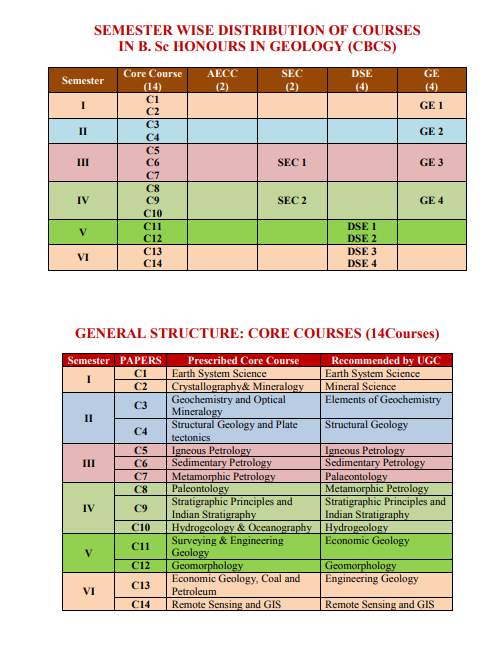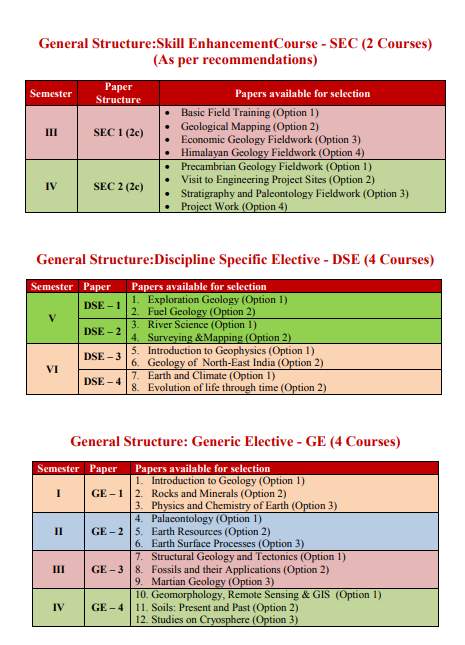|
#6
13th December 2019, 11:53 AM
| |||
| |||
| Re: Dibrugarh University Old Question Papers
The syllabus for B. Sc Honours in Geology (CBCS) Program on which the question paper is based offered by Department of Applied Geology, Dibrugarh University is as follows: 1st Semester: Geology Core Course: C-1: Earth System Science Unit 1: Universe and Solar System (L: 4 T: 1)5 classes (Marks: 8) • Formation and evolution of the Universe, Galaxy, Milky Way, Sun and the Solar System, meteorites and asteroids Unit 2: Earth System (L: 8 T: 2)10classes (Marks: 10) • Planet Earth, moon, planetary properties, orbital and rotational characteristics, physical characteristics, gravity, atmosphere, hydrosphere, lithosphere, biosphere, magnetic field, theories of origin, brief geological history and age of earth. • Interior of the Earth: core, mantle and crust. Unit 3: Introduction to Geology (L: 18 T: 2) 20classes (Marks: 30) • Various branches of geology and relation to other branches of science, concept of seismology. • Minerals and rocks: concept of native elements, mineraloids, rock forming minerals. Brief introduction to rocks: igneous, metamorphic and sedimentary rocks. • Gradational processes: weathering, erosion by running water, wind, gravity, ice and sea waves. Soil: formation, soil profile and soil types. Brief idea about different geomorphic environments. Physiographic divisions of Indian subcontinent • Concept of plate tectonics, origin of oceans, continents, mountains and rift valleys. Earthquake and earthquake belts. Volcanoes- types, products and their distribution • Atmospheric and hydrological processes: difference between sea waves and oceanic current system, Coriolis Effect, concepts of eustasy, land-air-sea interactions, wave erosional activities. Atmospheric circulation, wind, weather and climatic changes, earth's heat budget. • Stratigraphy and historical geology (understanding the past from stratigraphic records, nature of stratigraphic records, standard stratigraphic time scale and relationship between time and geology, introduction to geo chronological methods and their application in geological studies, history of development in concepts of uniformitarianism, catastrophism, actualism and neptunism, laws of superposition and faunal succession). Introduction to the geology of India C1: GEOH101P2: Earth System Science (Practical) Credit 2: Marks 40 (End-sem 32+ In-sem 8) 24 Hours Practical 1: Study of major geomorphic features from physiographical models. (6 Marks) Practical 2: Study of topographic sheets/contour maps and description of physiography. (6 Marks) Practical 3: Study of soil profile of any specific area. (4 Marks) Practical 4: Study of earthquake and volcanic belts of the world. (6 Marks) Practical 5: Study of major ocean currents of the World. (6 Marks) Note Book (2 Marks) Viva Voce (2 Marks) Syllabus B. Sc Honours in Geology (CBCS) Program Dibrugarh University     |